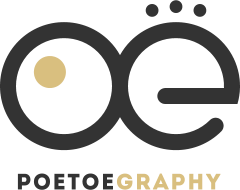I’ve been looking for this lens for quite some time, but got the chance to own one only recently.
As you might know, my educational background was architecture. Naturally, architectural photography is one of my favourite genre. Involving larger-than-human scale subjects, it requires a wide or ultrawide angle lenses. I already have the ultrawide, and it’s been very useful for my professional use. But sometimes i couldn’t achieve certain visual requirement that is the hallmark of a ‘real’ architectural / interior shots (which is a proper straight verticals with good vantage point) without serious editing. With regular ultrawides, sometimes i had to make compromises, but there’s a technical solution for this problem by using a special type of lens called ‘Perspective Correction’ Lens.
I’m a Nikon user, so the currently viable option would be the PC-E Nikkor 24mm f/3.5, which is excellent and has more features, but very expensive and has certain issues with some Nikon DSLR bodies due to it’s mechanical construction. I’ve tried one before, but never really fell in love with it.
So I’m looking for alternatives, and one that really interest me was the ‘older brother’ of the aforementioned lens. It’s the PC-Nikkor 28mm f/3.5, an all manual & purely mechanical lens with no electronic communication at all with the camera body.
After years searching without luck, I’ve finally found one with decent price & good condition. It’s smaller, a lot cheaper nowadays (while still a Nikkor lens) and has that ‘shifting’ capability for perspective correction with different mechanism than the newer PC-E 24mm.
Last weekend I’ve decided to test this lens out with my currently favourite FX DSLR body, Nikon D750. Knowing it’s strengths and limitations, I tried to utilise all the lens’s features for the best possible result. Surely, it’s a ‘slow paced’ lens. I had to be very methodical because everything had to be set manually. Using tripod helped a lot, especially if I’m planning to stitch the resulting images. Metering worked fine in unshifted position, but it’s all over the place when shifted, so I had to be very careful with my exposure. Live-view helped, but it also drained my battery quicker.
The result? I LOVE IT!! It’s plenty sharp and has that ‘classic’ rendering that I like (colours are vibrant yet natural, not saturated and contrasty like ‘modern’ Nano-coated lenses). The ability to ‘shift’ is a Godsend, since I can adjust the view-area that will be captured in camera without changing my vantage point (same perspective/camera position, adjustable view-area).
For horizontal buildings, i could adjust how much ground and sky i want to capture relative to the building, and for vertical tall buildings, I could make two exposure, one for the lower part of the building and one for the top part, then stitch them in post. This helps to eliminate the keystoning (vertical lines convergence) effect, since my camera is always at untilted/level position.
Overall, I’m satisfied with this little baby. It’s a mechano-optical wonder and I’m totally in love with it. Although it’s not the latest and greatest, it’s good enough for me and will be used professionally as long as possible.
Now, if only Nikon could come up with an updated version of 24mm PC-E or even a new 17mm PC-E lens like the one Canon has, I’ll be all over it, haha :D

